Plasma: Experimental Investigationsof High Frequency Plasma in the Infrared Spectrum
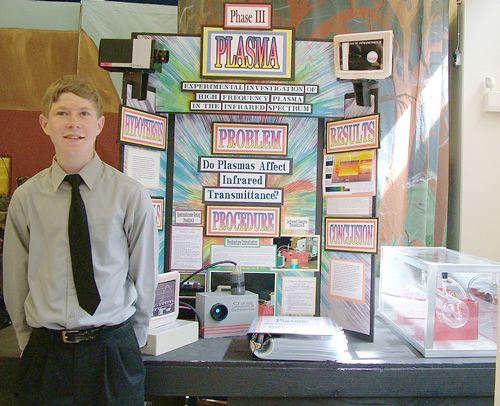
Shay Wins District Competition!
April 2005 (Norco, CA) — Shay Edwards, 14 year old science student at Norco Intermediate School, part of the Corona Norco Unified School District which has an enrollment of over 47,000, in Norco, California won the District Science Fair on March 5, 2005.
This was the 21th annual Science and Engineering Competition to be held in the district. Shay secured his spot at the District Level after successfully competing at the individual school level. As a result, Shay was among 5 students who advanced to the District Fair from an individual school.
Having competed successfully at the District Level, Shay will be among the 54 students who advance to the 4 County Competition to be held April 19 – 20, 2005. Shay secured his position by winning 1st place in the Physics and Astronomy division.
Edward’s project was entitled:
Plasma: Experimental Investigations
of High Frequency Plasma in the Infrared Spectrum
Edward’s offers the following Abstract of his endeavor:
Project Title: Experimental Investigation of High Frequency Plasma in the Infrared Spectrum
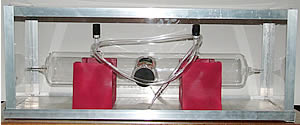
Objective: My main objective was to observe the infrared spectrum through electrically charged gas resulting in a plasma. I will be studying the transmission of infrared light through the plasma. I hypothesized that the plasma would not affect infrared viewing.
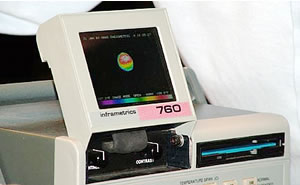
Materials and Methods: To test my hypothesis I designed a 4” x 24” plasma chamber constructed from Pyrex. On each end of the chamber is a tungsten electrode. Directly in the center on each side of the chamber is a 2” opening. One opening has a 16 gauge steel plate that is coated with flat black high heat paint. On the other opening is a 2” germanium window. The steel plate was heated by a hand warmer reaching 130 degrees attached directly to the outside. I used a Spectroradiometer, which operates in the spectral range from 2.5 to 14.5 um, and an 8-12 micron infrared camera with digital imagery. Testing was performed on Argon, Helium, and Neon plasmas. Before each test, the chamber was evacuated and held at 0 Torr for 6 minutes. Each gas was then inserted through the same vacuum hose to exactly 7 Torr. The power supply was a 5.5kV with 2.0 Amps current, and a frequency of 20 kHz. Clips were attached to the tungsten leads and power was turned on by a pull switch. The plasmas were tested in a controlled environment and photographed before and during the testing.
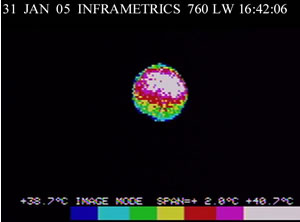
Results: Using the SR5000 Spectroradiometer wide range capabilities, I was able to look at one micron at a time with each plasma tested. After the SR5000 testing, I was the able to proceed using the information that I had gathered and test with the infrared imaging system on the same plasma to visually look for change in transmission.
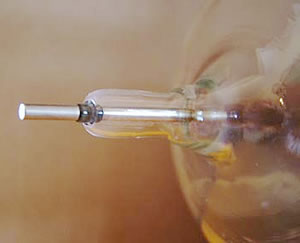
Conclusions/Discussions: The data from both types of test supports my hypothesis that Argon, Helium and Neon plasma had no affect on the transmissivity in the infrared spectrum.
Summary Statement: This project was an experimental investigation of high voltage, low current and high frequency observation of plasma in the infrared spectrum.
If you wish to send a word of encouragement, you may
Advertisement

